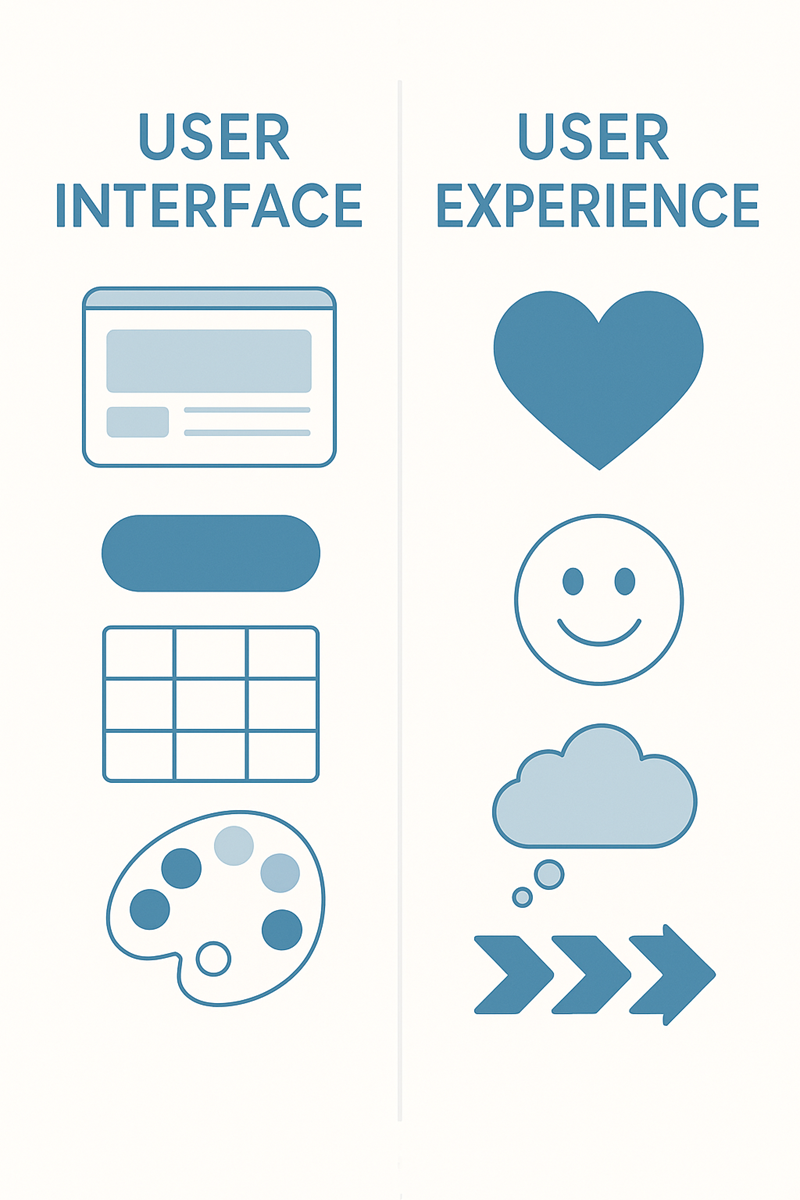User Interface vs. User Experience
Two terms that are often confused - but describe different aspects of interaction with digital products.
Definitions
User Interface (UI) refers to the visible and operable elements of a digital application: layout, colors, buttons, typography.
User Experience (UX) describes the entire experience - from the first perception to the use to the after-effect.
Comparison: UI and UX at a Glance
User Interface (UI)
The UI is what users see and use. It includes all visual and interactive components of an application.
- Design & visual level
- Layout, color scheme, icons, buttons
- Responsive design, accessibility
- Sub-area of the UX design
- Example: A structured navigation bar with clear icons
User Experience (UX)
UX describes how a product is experienced overall - emotionally, functionally and aesthetically. It encompasses expectations, usage situations and after-effects.
- Holistic: before, during and after use
- Emotional & cognitive dimensions
- Focus on user needs & context of use
- Includes usability & UI
- Example: The feeling of control and trust in online banking

Practical Example
A banking portal with a modern UI - clear colors, large buttons, intuitive icons - can look technically flawless.
But if users feel insecure, receive no feedback on actions or loading times cause frustration, the UX suffers.
Conversely, a site with a simple UI can offer an excellent UX - if it is reliable, fast and trustworthy.
Take Home Message
**UI is what users see. UX is what they feel **.
Deepening & Application
UX and UI can be specifically designed and improved - with the help of methods and standards:
- Heuristic evaluation: Identify UI weaknesses using proven usability principles.
- Personas & scenarios: Develop realistic usage contexts to derive UX requirements.
- Journey Mapping: Visualize emotional and functional contact points with the system.
- ISO 9241-110: Use the dialog principles to design user-friendly interfaces.
- Accessibility check: Ensure that UI components are usable for everyone - a prerequisite for good UX.
Frequently asked questions (FAQ)
What is the user interface (UI)?
What does user experience (UX) mean?
What is the difference between UI and UX?
Can a good UI make up for a bad UX?
What role does accessibility play in UI design?
How are UI and UX related in practice?
Last modified: 16 November 2025
